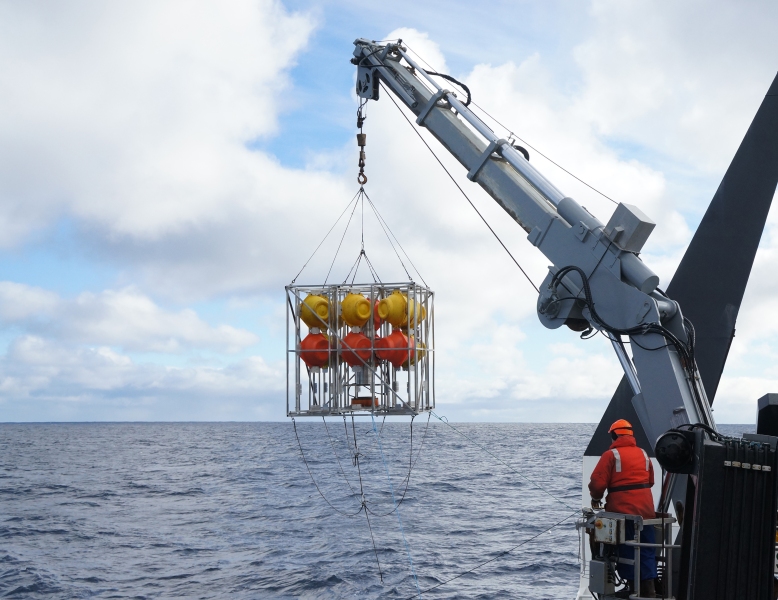Moored underwater cameras have exposed the secret lives of orange roughy nearly 900 metres below the ocean surface.
Deepwater fish numbers in New Zealand's Exclusive Economic Zone (EEZ) have traditionally been estimated using trawl surveys or acoustics, but NIWA wanted to go further. To make sure that the right fish are being counted in the right way, NIWA used underwater time-lapse photography to capture the fish on film. The results are looking very promising.
A 20-day fisheries experimental voyage on the research vessel Tangaroa was completed in June 2012. Moored cameras and echosounders were used together to provide new insights into fish populations on underwater hills on the north Chatham Rise, east of New Zealand.
Following on from a successful pilot study in 2010, video cameras were moored on two underwater hills, one known as Morgue that was closed to fishing in 2001, and another known as Graveyard which is still commercially fished.
Videos and lights were positioned at 8, 30, 50, and 70 metre intervals above the seabed, and timed to come on for two minutes every two hours. An echosounder was located at the top of the mooring to provide acoustic data that can be matched with the video footage.
The technique has revealed a range of fish behaviours, says Richard O'Driscoll, NIWA Principal Scientist and voyage leader.
"In the first video frame when the lights come on, there are fish that are behaving naturally, so their distribution off the bottom, and their species composition, is as close as we have been able to get to seeing the fish undisturbed.
"Once the lights have been on for a few seconds, the fish start to dive. Some were even seen to lie on their sides on the seabed. Others froze in front of the cameras almost like possums in the headlights."
Orange roughy were the main fish species present on both underwater hills, but densities on the closed underwater hill were higher than those on the fished one, and orange roughy occurred further away from the bottom on the closed one.
The work shows that the technique avoids problems that occur with other methods, such as trawls only effectively catching fish close to the seabed and towed or lowered cameras performing poorly because the fish move to avoid them.
"It's a rare opportunity to trial some new technology, rather than using the standard techniques that have been used for a long time," says Dr Pamela Mace, MPI Principal Fisheries Science Adviser. "We're very excited by what we're seeing."
Richard O'Driscoll says the intention would be to continue to use acoustic estimation of orange roughy abundance, with the time-lapse filming enabling checks on the acoustic work.
The voyage was funded by Land Information New Zealand Ocean Survey 20/20 and the Ministry for Primary Industries, which commissions research to help it administer the Quota Management System.
You can see more images in this gallery.



